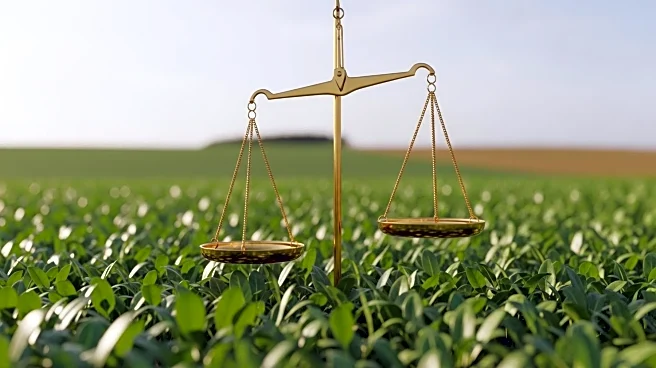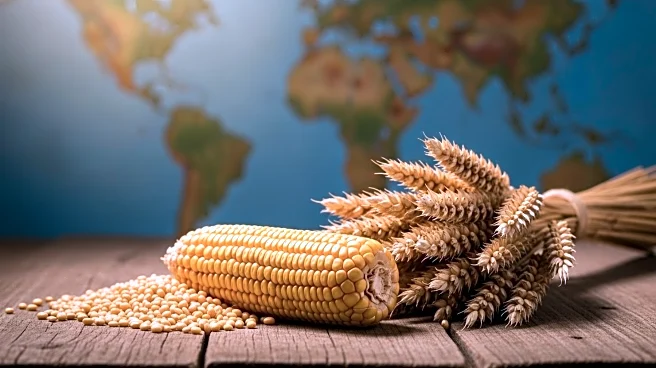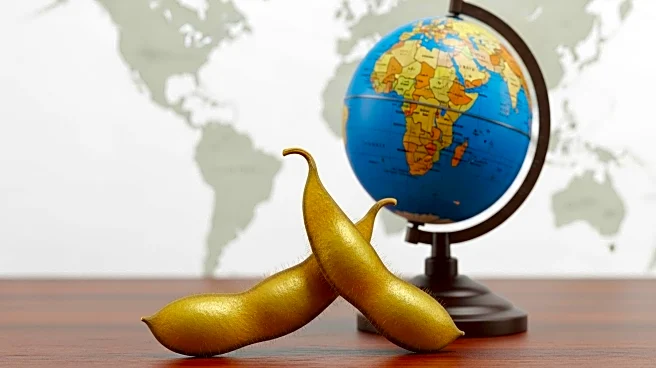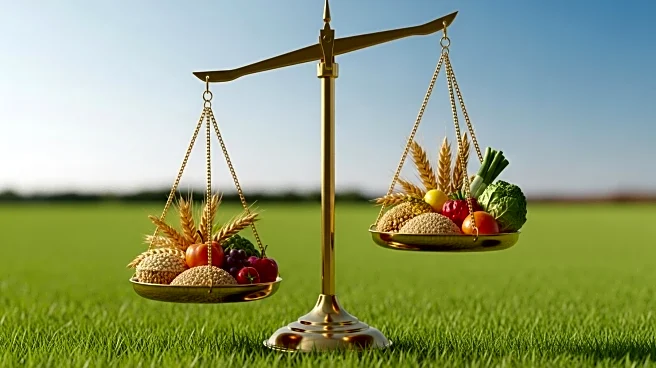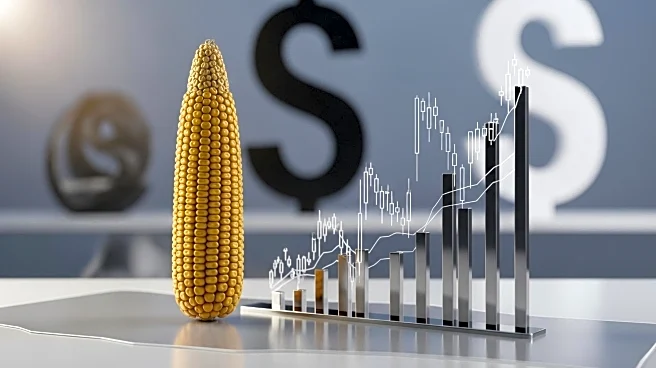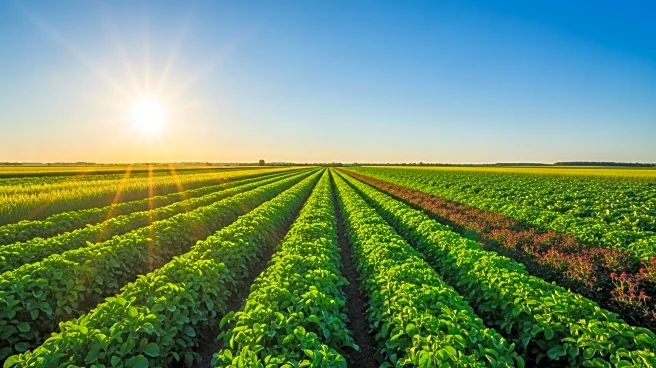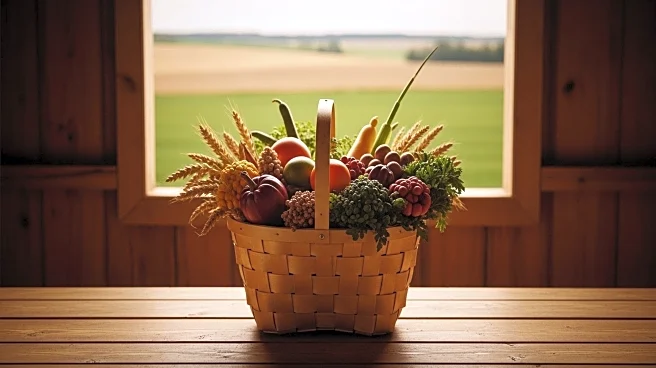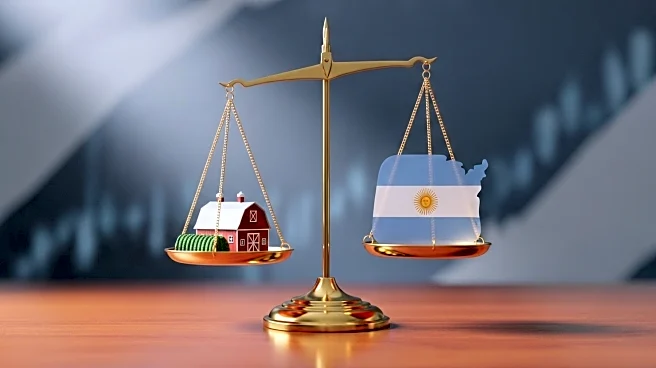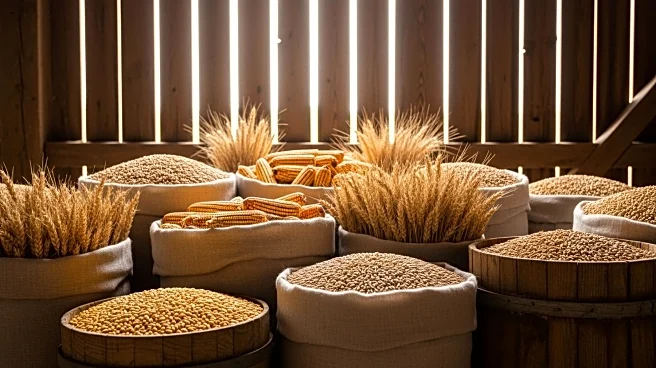What is the story about?
What's Happening?
The United States Department of Agriculture (USDA) has announced an additional round of Economic Community Assistance Program (ECAP) payments for 2024. This decision comes as crop producers across the U.S. face financial challenges due to low commodity prices and high input costs. The USDA projects record national average yields for corn and soybeans in 2025, but these are insufficient to counteract the negative profit margins many farmers are experiencing. The initial ECAP payments covered 85% of the total eligible amount, and the new round will add an additional 14%, bringing the total to 99% of the maximum 2024 ECAP payment. These payments are designed to offset the financial strain on producers of major crops, with no application process required for the second round. Payment rates vary by crop, with corn receiving $6 per acre and soybeans $4.16 per acre, among others.
Why It's Important?
The additional ECAP payments are crucial for sustaining the financial viability of U.S. farmers who are struggling with tight cash flows. The agricultural sector is a significant component of the U.S. economy, and the financial health of farmers directly impacts food supply chains and rural economies. By providing these payments, the USDA aims to stabilize the agricultural sector and prevent further economic distress. Farmers in regions with poor yields in 2024 are particularly reliant on these payments to maintain operations. The payments also reflect broader government efforts to support the agricultural industry amid ongoing economic challenges, including low commodity prices and the impacts of tariffs.
What's Next?
Looking ahead, there is potential for further government assistance for the 2025 crop year. Discussions are ongoing between Congress and the USDA regarding additional payments to mitigate the effects of continued low commodity prices and tariffs. These payments could be similar to the ECAP payments or structured like the Market Facilitation Program from the first Trump administration. Any new assistance would likely be distributed late in 2025 or early 2026, depending on funding and legislative decisions. Farmers and industry stakeholders will be closely monitoring these developments as they plan for future planting seasons.
Beyond the Headlines
The announcement of additional ECAP payments highlights the ongoing challenges faced by the agricultural sector, including the need for government intervention to sustain operations. This situation underscores the vulnerability of farmers to market fluctuations and the importance of policy measures that provide financial stability. The reliance on government payments also raises questions about the long-term sustainability of current agricultural practices and the need for innovation and diversification to reduce dependency on external support.
AI Generated Content
Do you find this article useful?
